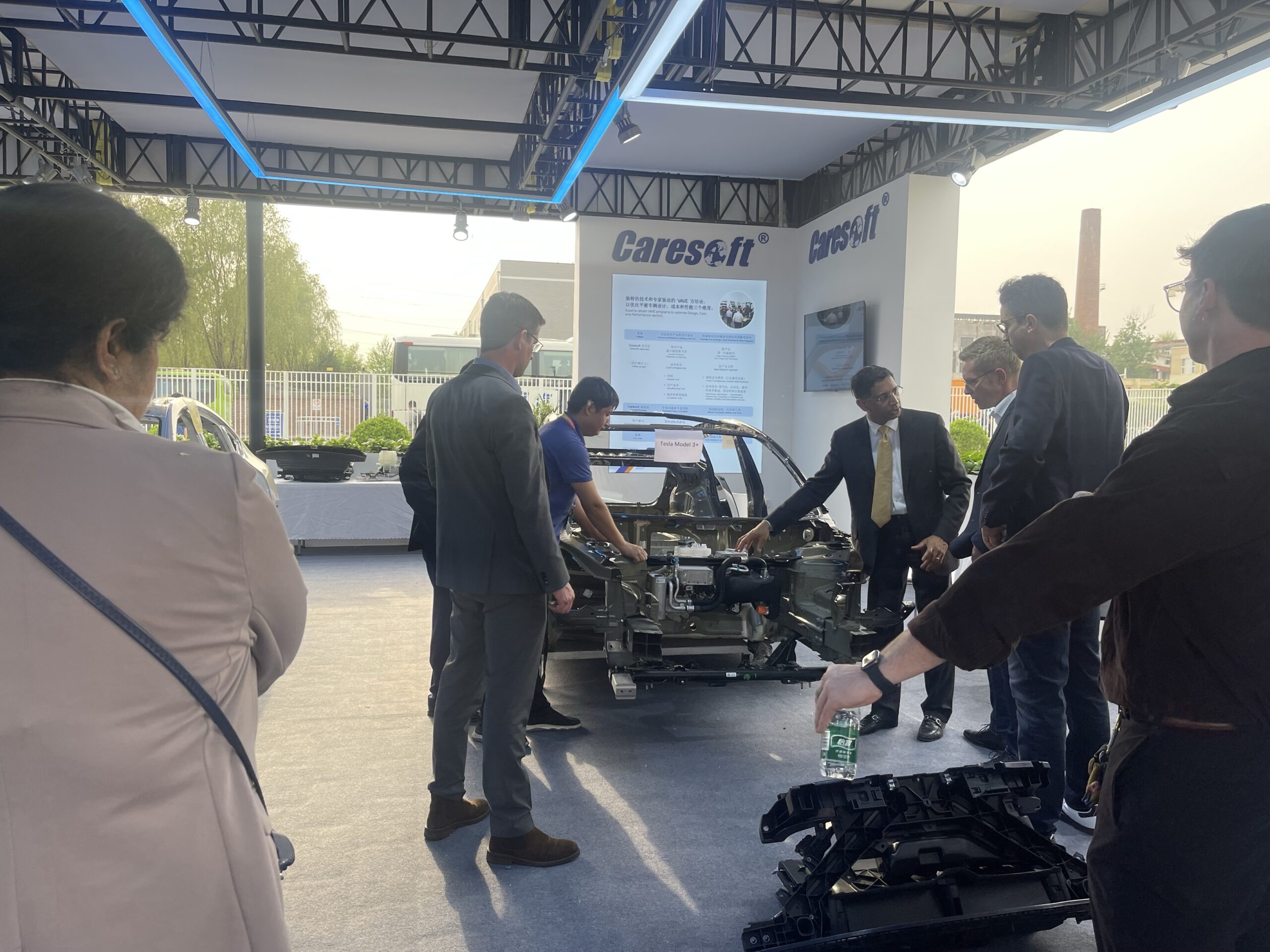We’re back from the Beijing Auto Show 2024, which cemented the dominance of electric vehicles (EVs) and extended-range electric vehicles (EREVs) in the Chinese automotive landscape. We saw the world premier of 117 cars in total, including 41 concept cars. From established domestic players to the global giants, manufacturers showcased 278 electric vehicles, highlighting advancements in technology, design, extended range capabilities, and user experience.
Here’s what we learned, followed by what your next steps should be.
1. Innovation Trumps Tradition
China’s automotive market is a whirlwind of innovation, prioritizing speed over traditional development timelines. This emphasis on agility is evident in the AITO M9, a car that utilizes the world’s largest one-piece die-casting technology for its body. This technique achieves both lightweight construction and high strength through single-piece casting in key areas. This potentially simplifies assembly compared to traditional methods with numerous parts, contributing to faster build times.
The event also served as a testament to China’s growing technological prowess in the EV space. Chery, a domestic manufacturer, unveiled a concept car with a claimed world-lowest drag coefficient, showcasing its commitment to pushing boundaries in aerodynamics. This highlights the growing capabilities of Chinese manufacturers and their potential to disrupt the global automotive landscape with innovations that can benefit the entire industry. Another example is NIO’s intelligent chassis system, featuring steer-by-wire, rear-wheel steering, and fully active suspension.
2. A Surge in Electric SUVs
The mid-to-large SUV segment emerged as a battleground for manufacturers, with a flurry of new EV and EREV models vying for consumer attention. Leading the charge was Xiaomi, a tech giant entering the automotive space with its first offering, the SU7 EV.
Featuring impressive range and innovative connectivity features seamlessly integrated with its ecosystem, the SU7 underlines the growing importance of digital cockpits. This integration allows for a more intuitive and personalized driving experience, potentially utilizing multifunction ICs to handle various features such as ADAS, infotainment, and climate control within a single chip.
Other notable entries in the SUV arena included the IM Motors L6 EV, boasting innovative crabwalk maneuverability and advanced driver-assistance systems (ADAS). Denza, a joint venture between BYD and Mercedes-Benz, unveiled the Z9 GT EV, a powerful electric shooting brake with a head-turning design.
3. Addressing Range Anxiety
The show underscored a clear message: conquering range anxiety. Chinese manufacturers unveiled a wave of EVs boasting impressive travel distances on a single charge.
BYD’s Denza Z9 GT, for example, promised both power and extended journeys exceeding 149 mph (240 km/h). Similarly, Xiaomi’s SU7 offered a compelling range of up to 800 km (CLTC), directly addressing a key barrier to EV adoption in China.
This focus on extended range suggests Chinese consumers can expect EVs that can compete with traditional gasoline-powered vehicles in terms of travel distance.
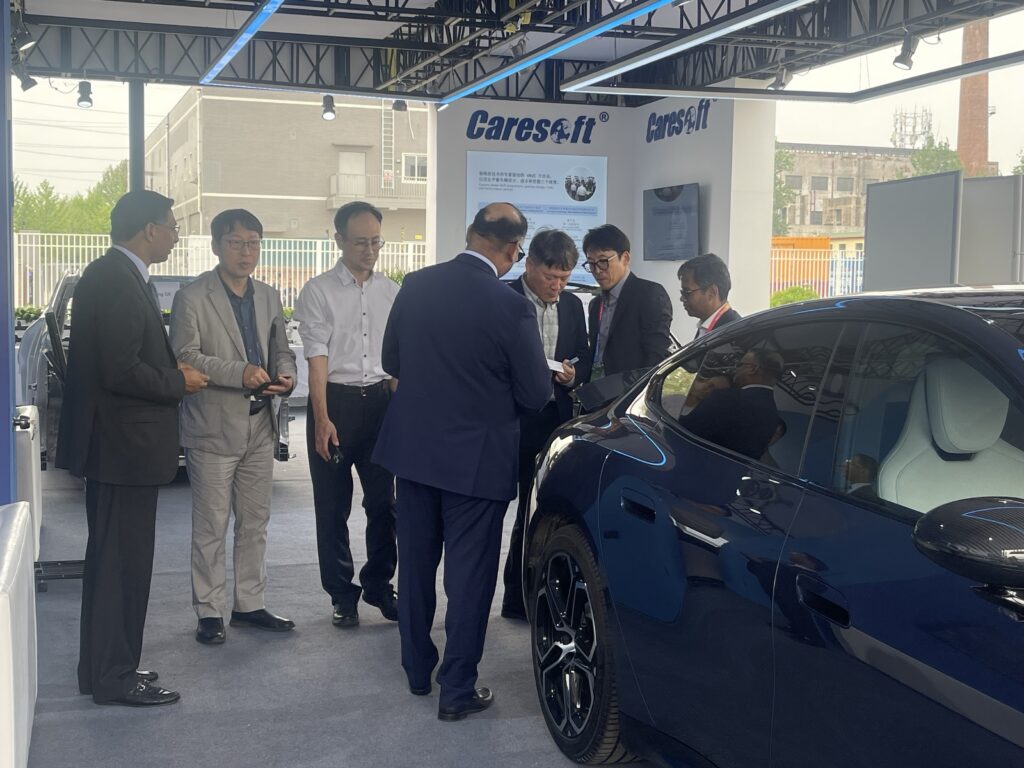
4. Fast Charging: A Convenient Power Boost
Beyond extended range, several manufacturers showcased advancements in fast-charging technology. CATL, for example, unveiled next-generation batteries that offer faster charging times and longer ranges, addressing two of the most significant barriers to EV adoption. Leapmotor’s C16 EREV, for instance, highlighted its ability to rapidly recharge, significantly reducing charging times.
This focus on faster charging infrastructure is crucial for facilitating long-distance travel and easing concerns about running out of power. By prioritizing faster charging, Chinese manufacturers are making EVs a more convenient and practical option for everyday use.
5. Tech Revolutionizes the Driving Experience
The show wasn’t just about electric vehicles; it was a platform for groundbreaking advancements in automotive technology. The integration of advanced driver-assistance systems (ADAS) was a common theme, with manufacturers like IM Motors’ L6 featuring lidar technology for enhanced safety, potentially paving the way for more autonomous driving capabilities in the future.
Furthermore, Changan’s Qiyuan E07 showcased a unique transformable rear design, demonstrating innovation in vehicle functionality and catering to diverse consumer needs.
Zeekr’s Mix EV stood out with its futuristic cabin featuring rotating seats, appealing to a new generation of tech-savvy car buyers who prioritize comfort and a personalized driving experience. We saw Black Sesame Technologies’ multifunction chips at work, designed to optimize driving, parking, and cockpit functionalities.
6. AI Ushers in a New Era of Cars
The event also highlighted the growing influence of artificial intelligence (AI) in the Chinese automotive industry. Geely’s Galaxy Starship SUV concept showcased the potential of AI-powered digital chassis systems, promising improved safety, performance, and driver assistance.
This trend signifies a future where cars become increasingly intelligent and personalized, catering to individual driving styles and preferences.
7. Global Collaboration Meets Local Innovation
While Chinese manufacturers dominated the show floor, global brands such as BMW, Porsche, Audi, and Mercedes-Benz marked their presence with their latest electric offerings.
The participation of these established players underscores the growing importance of the Chinese market and their commitment to electrification. This global collaboration fosters a healthy exchange of ideas and accelerates innovation across the entire industry.
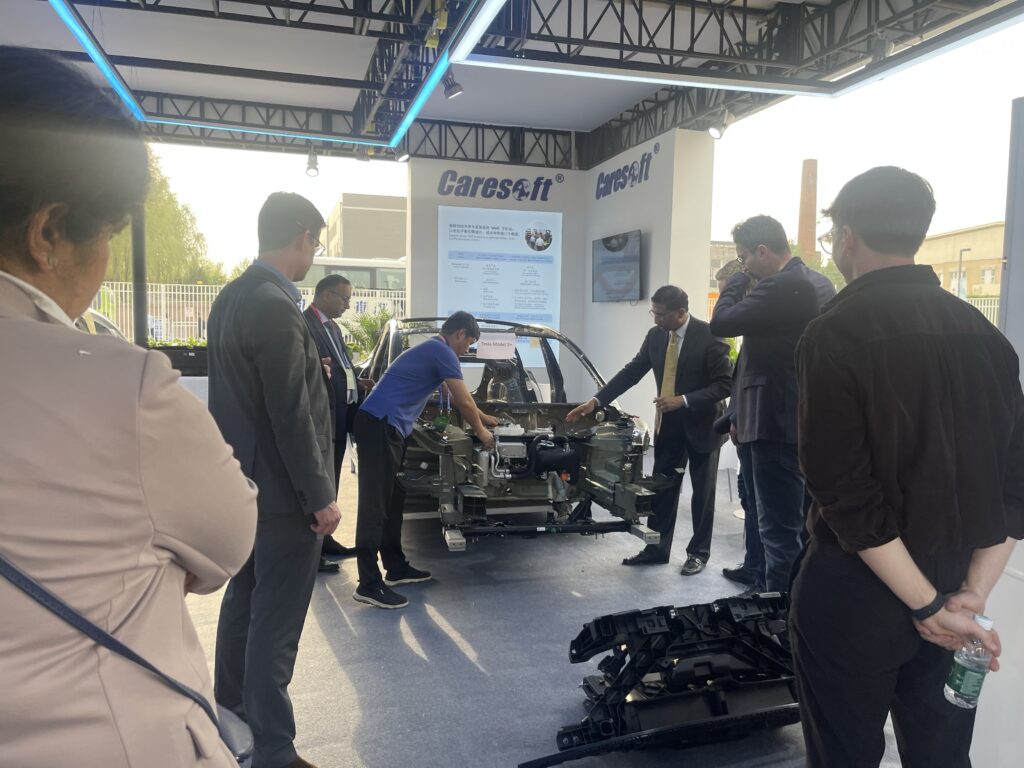
Next Steps: Learn How They do it in Iceberg 3.0
Don’t get left behind.
The relentless pursuit of innovation drives the automotive industry. Iceberg 3.0, our software platform specifically designed for car engineers, acts as a decoder ring, unlocking the mysteries behind competitor vehicles. By providing a comprehensive view of their designs, Iceberg 3.0 empowers engineers to create better cars, faster.
And the secrets of the EVs we saw in Beijing will soon be detailed on Iceberg 3.0.
Here’s what our innovative platform delivers:
X-Raying Competitor Vehicles
Iceberg 3.0 goes beyond the surface, offering a deep dive into competitor offerings. It meticulously gathers data on material usage, component weight (specifications), and a complete breakdown of all parts (Bill of Materials). This granular detail allows for side-by-side comparisons using 3D models.
Iceberg 3.0 also grants access to teardown data, a process where a competitor’s car is meticulously disassembled to analyze its construction methods. This in-depth analysis extends to performance data, including factors such as battery life and thermal management.
Turning Data into Actionable Insights
Iceberg 3.0 doesn’t just collect data – it transforms it into actionable insights. User-friendly tools empower engineers to perform comprehensive comparisons of specific parts or entire vehicles across different manufacturers.
Powerful analytics tools uncover hidden patterns and trends within the data, providing valuable knowledge that would be difficult to glean otherwise. Iceberg 3.0 even integrates cutting-edge AI, potentially offering data-driven suggestions to accelerate the design process.
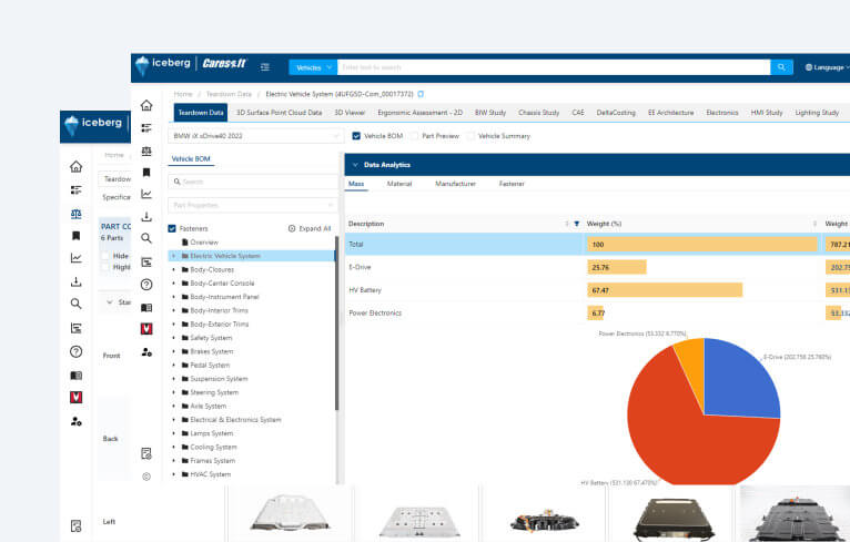
Fueling Collaboration and Streamlining Development
Understanding the importance of collaboration in the fast-paced world of car design, Iceberg 3.0 goes beyond data collection. It provides robust tools for managing and organizing this valuable resource. Users can create flexible data templates tailored to their specific projects, while streamlined approval workflows ensure efficient data management.
Furthermore, Iceberg 3.0 fosters a knowledge-sharing environment by facilitating seamless collaboration. Engineers can share data and insights with colleagues and stakeholders, propelling innovation forward.
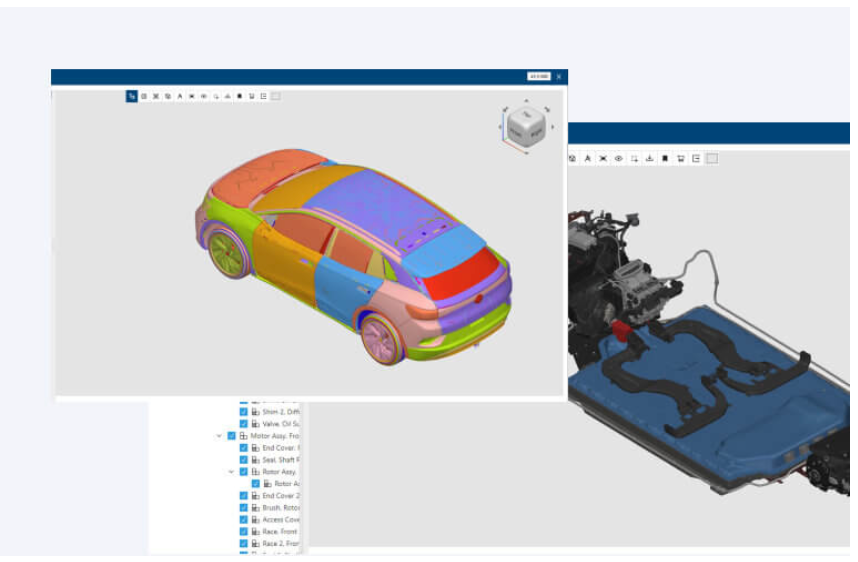
The Design Efficiency Engine
By placing a wealth of competitive intelligence at engineers’ fingertips, Iceberg 3.0 streamlines the design process in several key ways.
- Allows for pinpointing areas for improvement by comparing designs directly to competitor vehicles. This comparative analysis can reveal opportunities to make cars lighter, more efficient, or utilize lower-cost materials.
- Provides access to teardown data and insights from leading-edge vehicles serves as a springboard for innovation, sparking new ideas and approaches.
- Enables a clear understanding of how design choices impact factors like cost, weight, and performance, empowering engineers to make informed decisions throughout the process.
Let’s Talk
In essence, Iceberg 3.0 is a comprehensive platform designed to empower automotive engineers. It fosters a data-driven and collaborative environment, ultimately accelerating the creation of better cars, faster.
Want to know more about Iceberg 3.0 and the innovative EVs on show in Beijing? Reach out to learn more. Contact us now.
